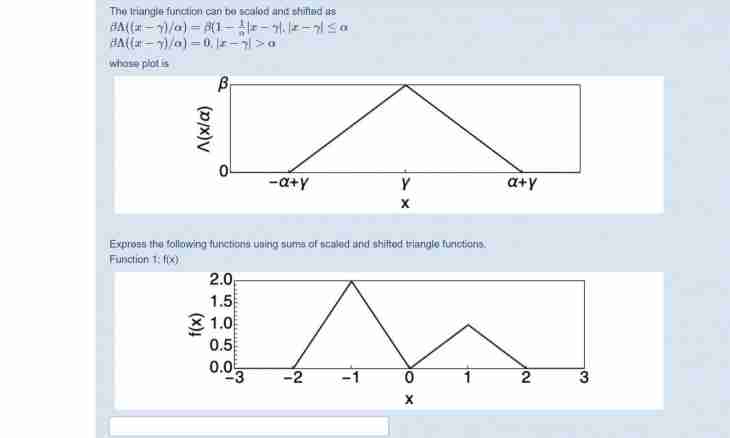The main property of an isosceles triangle is equality of two adjacent parties and the corresponding corners. It is possible to find easily the party of an isosceles triangle if the grounds and at least one element are given.
Instruction
1. Depending on conditions of a specific objective, it is possible to find the party of an isosceles triangle if the grounds and any additional element are given.
2. Basis and height to it. The perpendicular which is carried out to the basis of an isosceles triangle is the simultaneous height, a median and a bisector of an opposite corner. This interesting feature can use, having applied Pythagorean theorem: and = √ (h² + (with / 2)²), where and – length of the equal parties of a triangle, h – height which is carried out to foundation of the village.
3. Basis and height to one of sides. Having carried out height to side, you receive two rectangular triangles. A hypotenuse of one of them – the unknown party of an isosceles triangle, a leg – the assigned altitude of h. The second leg is unknown, designate it x.
4. Consider the second rectangular triangle. Its hypotenuse – the basis of the general figure, one of legs h is equal. Other leg represents a difference and – x. On Pythagorean theorem write down two equations concerning unknown and and x: and² = x² + h²; with² = (and - x)² + h².
5. Let the basis be equal 10, and height 8, then: and² = x² + 64;100 = (and - x)² + 64.
6. Express artificially entered variable x from the second equation and substitute it in the first: and – x = 6 → x = and – 6a² = (and - 6)² + 64 → and = 25/3.
7. The basis and one of equal corners α.Проведите height to the basis, consider one of rectangular triangles. The cosine of a side corner is equal to the relation of an adjacent leg to a hypotenuse. In this case the leg is equal to a half of the basis of an isosceles triangle, and a hypotenuse – its side: (with / 2) / a = cos α → and = with / (2•cos α).
8. Basis and an opposite corner β.Опустите a perpendicular on the basis. The corner of one of the turned-out rectangular triangles is equal β/2. The sine of this corner represents the relation of an opposite leg to a hypotenuse and from where: and = with / (2•sin(β/2))

